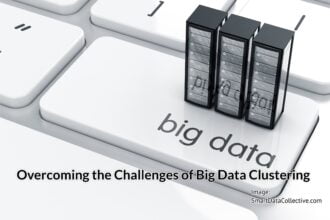In the financial services industry, there’s no such thing as too fast.
With the performance-doubling pace of Moore’s law finally coming to an end, graphical processing unit coprocessors are stepping in to deliver the boost that financial professionals need to handle ever more complex operations. GPU-accelerated computers are now being built with thousands of coprocessors, enabling multiple tasks to be executed simultaneously. These have transformative applications in the demanding worlds of trading, risk assessment, and portfolio analysis. Here are three ways GPU-accelerated processors and databases are changing the financial services industry.
1. Risk Assessment
Calculating risk is at the heart of every financial services business, from stock trading to insurance. The task of calculating risk scores involves large data sets and complex algorithms. It’s so CPU-intensive that risk assessment is typically done in batch overnight.
GPU databases cut risk aggregation times from hours to seconds. Datasets can be shared and processed in parallel, with the results combined at the CPU level. This enables insurance companies to quote rates instantly over the phone rather than the next day. Portfolio analysts can assess the risk of a basket of stocks while sitting across the table from the customer instead of scheduling another meeting. Traders can assess the impact of a news event on stock prices and move ahead of the market. Any financial services organization that relies upon speed will see competitive advantage from faster calculation of risk.
2. Fraud Reduction
Credit card fraud is a $16.3 billion problem annually in the United States. Harder to quantify is the loss merchants take by declining transactions that should be approved. Some GPU databases can dramatically reduce the scope of both problems.
One of the principal drivers behind credit card fraud is that banks and merchants are under pressure to make split-second decisions in order to minimize customer wait times. However, the diverse and high-cardinality datasets typically needed to assess risk are hard to index and be processed in real-time.
GPU databases provide enough brute force that indexing is less important. They can distribute algorithms across multiple nodes and processors to find anomalies faster and to deliver more reliable decisions in the same or less time. Because the parallelized processing architecture enables near-linear scalability, the quality of decision improves when GPUs are applied to the task. Machine learning algorithms make computers “smarter” the more transactions they process, further trimming response times.
3. Faster, Better Trades
In stock trading, milliseconds count. Decisions hinge upon computers combing through vast amounts of historical data and applying mathematical models to compare past trends to current pricing patterns. With GPU in-memory databases, trading companies can load all their historical data into memory and process it in parallel. Some GPU databases are optimized for machine learning, which enables algorithms to detect patterns in data that humans wouldn’t see. They’re also ideally suited to processing streaming data. The combination of these features enables traders to apply calculations to live pricing information, resulting in near-real-time decision-making and more confident trades.
GPU databases combine the power of machine learning, real-time data ingestion, parallel processing, and nearly unlimited scalability to change the rules of financial services.









